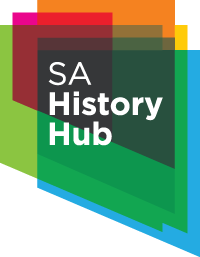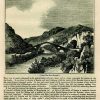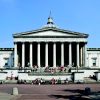As one of the directors of George Fife Angas’ South Australian Company, Henry Waymouth was an automatic selection for inclusion by the Street Naming Committee for Adelaide. The directors of the company were selected because without their financial strength the colony might not have been founded. However, Waymouth’s station in life and his age, maturity, religious commitment and influence in both the reform and educational movements of the early 1800s went way beyond the membership of the Board of Directors of the South Australian Company.
He moved both widely and easily in and throughout London society, especially among the intellectual, non-conformist and liberal elites.
Henry Waymouth was among the first to offer up capital on the day the South Australian Company was formed on 9 October 1835. Both he and Angus were also London directors of the National Provincial Bank of England, and by January 1836 Waymouth was the fourth largest investor, holding 60 shares.
Although a commoner, Henry Waymouth’s most significant role as Chairman of the Protestant Dissenting Deputies between 1832 and 1844 gave him both entree to and influence in the halls of power and the Royal Court.
His most enduring legacy was his contribution as the leader of this privileged and powerful lobby group of non-conformists, to which he was first Vice Chairman between 1825 and 1832. Waymouth relinquished the role of Chairman in 1844 to John Remington Mills MP, the son of Samuel Mills of Mills Street, Adelaide. By this time Waymouth was almost 70.
Henry Waymouth came from a moderately wealthy banking family in Exeter, Devon. He was born to Henry and Sarah (nee Bryant) around 21 January 1775. The eldest of five boys, the children were part of a strong Baptist community and it is obvious from some of their father’s interests that Henry Snr had a powerful influence on their futures. Education, charitable works, compassion, benevolence and a respect for learning became the cornerstones of Henry Waymouth’s life.
By the age of 20, he was living in Battersea. On 21 August 1799 he married Sarah Thorpe, then 21 or older, from the Parish of Saint Giles’ Cripplegate, in London. In 1803 the couple’s only daughter, Sarah Thorpe Waymouth, was born in Battersea. By the 1830s the family had settled in St Marylebone, in the county of Middlesex.
There are few references to the business activities of Henry Waymouth in the early part of his marriage, but those that do exist reveal a man with some family capital behind him who could afford to take more than a passing interest in manufacturing and commerce. This was not unusual in Protestant dissenting circles because the prudence, moral rigour and temperate behaviour demanded of practising Christians often delivered a financial dividend to those with the deepest commitment.
The Waymouth dynasty was no exception in this regard, but ironically it was not only banking from which the family derived its capital, for as early as 1785 Henry Waymouth Snr had a successful malt distilling business in Battersea before venturing into banking in Exeter. Presumably this malt distillery passed to his son at about the time Henry Jnr married Sarah in 1799.
Over the next two decades Waymouth’s business activities became more diverse. He remained in partnership with the Currie family in a joint malt distilling business known as Currie Waymouth & Co. until it was disbanded on 10 October 1842. He was a shareholder of the General Mining Association, there being a flurry of mining exploration by British investors during the 1820s.
The Iron Horse captured many an imagination, and as early as 1802 Waymouth joined a committee of businessmen and interested parties to form an extension to the Surrey Iron Railway. Waymouth took more than a financial interest and as the pace of development of what was to become Britain’s National Rail system spread across the country, he joined the management committees of both the Portsmouth Junction Railway and the South London Union Railway. Whether he ever made any money from either of these developments in 1836 is conjectural, as many investors suffered substantial losses in railway investment during the early 1840s.
Another line of financial activity maintained by the Waymouth family was the involvement in the insurance business and by association some other banking houses. At the time of European settlement in Adelaide in the late 1830s Henry had become a director of the Hand in Hand Fire and Life Insurance Company, situated in Blackfriars. His commitment continued until his death and by 1846 he was one of fifteen directors of the company.
In 1798 Waymouth joined what was known as the Royal Society for the Encouragement of Arts, Manufactures and Commerce. While his motives might then have been more to do with manufacturing and business, he soon found himself at the forefront of some of the most enlightened educational thinking of the nineteenth century.
In 1807, aged 32, Waymouth was elected to the management committee of the Surrey Institution for the Diffusion of Science, Literature and the Arts. He was involved in the repair and redesign of the Rotunda building in Blackfriars as an educational institution, to be named the Surrey Institution, at which local residents were invited to partake of a rich and cultivating program of lectures and science demonstrations by professors in natural and moral philosophy, literature and the arts.
This became the first of Waymouth’s steps towards a number of other remarkably enlightened educational initiatives in which he participated.
By 1824 both Henry Brougham and George Birkbeck brought science and technology to the masses through the organisation they called the Society for the Diffusion of Useful Knowledge. Waymouth, who had known Brougham for at least two decades in the context of the anti-slavery movement, wrote to him requesting information about the organisation, and Brougham invited him to join him on the central committee. Full of enthusiasm Waymouth personally took on some of the hard graft required to bring many of the organisation’s publications to the reading public.
Waymouth’s evolving interest in learning inexorably led him to join with other like-minded non-conformists including Francis Augustus Fox, Olinthus Gregory and John Gurney in a call for a ‘non-confessional’ university. They found support from several secularist and atheistic luminaries with whom they were associating in other educational and philanthropic enterprises. The group included George Grote, Brougham, James Mill, Jeremy Bentham and others. In an unlikely coalition they set about raising funds to open London University.
After some debate and a certain amount of uneasiness from those expecting an element of religious studies within the curriculum, it was decided not to make any ecclesiastical demands on students at all, and to keep the institution completely secular. This was a progressive step. The doors were thrown open to all, including Jews and Anglicans. It was perhaps Henry Waymouth’s greatest moment. Today, he is regarded as one of the founders of London University (now University of London).
Waymouth had a long and lasting association with the new university and continued to serve on its Council until well into his twilight years. His other philanthropic endeavours in the community were considerable and he was often mentioned in the press in this regard. He supported those in need where he could and gave generously to worthwhile cultural initiatives.
Waymouth’s abiding and overarching interest in the abolition of slavery was also one of his great passions. He was part of the vanguard for this movement and a committee member of the Society for the Mitigation and Gradual Abolition of Slavery Throughout the British Dominions, which formed in 1823.
In his last years, between 1832 and 1844, Henry Waymouth became such a strong Chairman that The Times, a notoriously pro-Tory newspaper, became irritated by some of his calls for change, especially on the matter of church rates, which all dissenting congregations had to pay to maintain the established church.
His time was closing as he began to decline and on 23 January 1848 Henry Waymouth died at his home in Bryanstone Square, London.







Comments